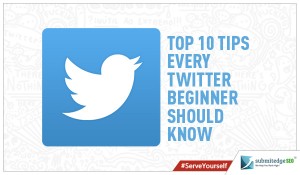Thanks to the Three Digital Accelerators I identified in the early ’80s, which include computing power/processing power, storage, and bandwidth, we as a global society are at a time of extreme connectivity. Exponential digital technology is transforming every business process, and massive disruptions are at every turn.
The reality is those Three Digital Accelerators are only going to continue to increase, and as a result, digital disruptions will become even more widespread than they already are. So, with that being said, what are you doing as a business leader or what is your organization doing as a whole to embrace transformative digital technology rather than resist it?
More importantly, are you as an organization embracing it, or do you feel your organization is merely pivoting to get by?
Digital Technology Simplifies Our Lives
The fact of the matter is that digital disruptions are what I refer to as a Hard Trend, or a future certainty that will happen, and try as you might, a digital disruption of any kind will inevitably find its way into your industry, organization, or specific department.
While that might sound intrusive, trust me when I say that digital disruptions are a positive thing! Let’s use an example that is not solely limited to business, but something that is present in our everyday lives: smartphones and tablets.
If we turn the clocks back well over a century ago, Alexander Graham Bell invented the telephone as a device to more quickly and efficiently communicate with one another at a moment’s notice. Many years later, around the ’90s, we finally started to see the dawn of the mobile phone, which made it possible for us to call one another while out and about, simplifying our lives. You wouldn’t buy milk and eggs at the grocery store if you could call your spouse at home and discover that you already had some, saving you time and money.
Fast-forward a little bit more, and we now have smartphones; personal computers in our front pockets and purses. This has simplified our lives even further by connecting us to both the internet and one another via texting, video calls, and more.
Disruptions Breed Business Diversity and Longevity
In our personal lives, technology improves and simplifies our lives. But when so many jobs transform and potentially even go away thanks to exponential digital transformation, how could this possibly be a good thing?
The answer is simple: Consider a Hard Trend that change is the only constant. Customer wants and needs are always evolving with the times, and this means that your business always has unlimited opportunity to grow.
Think back to our telephone example for a moment. Imagine a world where the first telephone was good enough. Think of all the careers that have stemmed from the connectivity of the internet, from smartphones and tablets, or even older iterations of mobile phones; none of that would exist! Without disruptive technology that simplifies and revolutionizes processes, your organization might never have reached the heights it is at now.
The ripple effect that disruption in general creates can be linked heavily to the diversity and longevity of an organization, as change in the world gives it a chance to grow indefinitely. Are some disruptions detrimental? Yes.
Using Hard Trends to Be the Disruptor
Disruption is like physics: An object at rest tends to stay at rest… until something or someone thrusts it into motion, that is. My Anticipatory Organization Model teaches an individual to use the tools available to them to put them in the driver’s seat of that disruption.
A large part of my Anticipatory Organization Model is rooted in my Hard Trend Methodology. Identifying Hard Trends that will shape your industry both inside and out and separate them from Soft Trends that are open to influence set you ahead of the disruptive curve.
Again referencing our telephone example, but from a business perspective: If you were a company that installed landline telephones, mobile phones certainly disrupted your status quo in an unfavorable way.
However, if you viewed the onset of cordless landlines emerging in the early ’90s as the Hard Trend that it was, you likely leveraged that information to start getting involved in the cordless mobile phone and, eventually, smartphone industries.
A disruption might not always be on a silver platter in your lunchroom, but when you utilize my Hard Trend Methodology to identify the future certainties shaping the world both inside and outside of your industry, it can be. Being able to anticipate what is to come by understanding future certainties effectively lets you send the disruption into motion first to your and your industry’s benefit.
A United Futureview
Because this methodology gives you the chance to disrupt, it is equally as easy to foster a shared Futureview at your organization, which is a healthy environment for both innovation and a positive outlook on transformative digital technology.
No longer will your employees or organization as a whole look at digital disruptions as a bad thing that must be merely “dealt with,” or try to protect and defend legacy systems in place of new developments for fear that those new developments will discredit their entire career.
When an organization demonstrates knowledge and confidence in how change leads to more opportunities for both the organization and the employees, those workers feel as though they can trust the organization with the future of their career and trust that there is a future in front of them.
Ultimately, when you are in charge of how digital technology disrupts, those disruptions will always be a positive thing.
Business & Finance Articles on Business 2 Community(35)
Report Post




